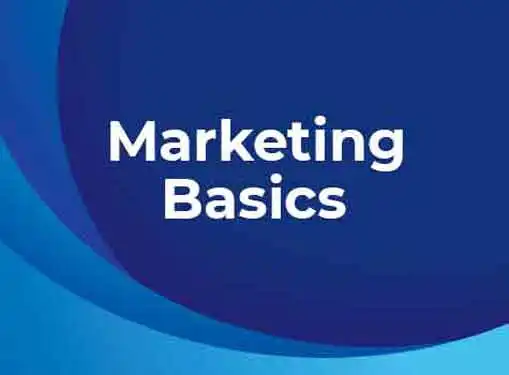Small Business Marketing
Marketing Basics
This article offers an introduction to entrepreneurial marketing. We touch on a variety of marketing concepts, including market research, marketing strategy, target marketing and how to define a good marketing mix.
To succeed, entrepreneurs must attract and retain a growing base of satisfied customers.

Marketing programs, though widely varied, are all aimed at convincing people to try out or keep using particular products or services.
Business owners should carefully plan their marketing strategies and performance to keep their market presence strong.
What is Marketing?
Marketing is based on the importance of customers to a business and has two important principles:
1. All company policies and activities should be directed toward satisfying customer needs.
2. Profitable sales volume is more important than maximum sales volume.
To best use these principles, a small business should:
- Determine the needs of their customers through market research
- Analyze their competitive advantages to develop a market strategy
- Select specific markets to serve by target marketing
- Determine how to satisfy customer needs by identifying a market mix
Market Research
Successful marketing requires timely and relevant market information. An inexpensive research program, based on questionnaires given to current or prospective customers, can often uncover dissatisfaction or possible new products or services.
Market research will also identify trends that affect sales and profitability. Population shifts, legal developments, and the local economic situation should be monitored to quickly identify problems and opportunities. It is also important to keep up with competitors' market strategies.
Marketing Strategy
A marketing strategy identifies customer groups which a particular business can better serve than its target competitors, and tailors product offerings, prices, distribution, promotional efforts, and services toward those market segments. Ideally, the strategy should address unmet customer needs that offer adequate potential profitability. A good strategy helps a business focus on the target markets it can serve best.
Target Marketing
Owners of small businesses usually have limited resources to spend on marketing. Concentrating their efforts on one or a few key market segments - target marketing - gets the most return from small investments. There are two methods used to segment a market:
1. Geographical segmentation - Specializing in serving the needs of customers in a particular geographical area. For example, a neighborhood convenience store may send advertisements only to people living within one-half mile of the store.
2. Customer segmentation - Identifying those people most likely to buy the product or service and targeting those groups.
Managing the Market Mix
Every marketing program contains four key components:
- Products and Services
- Promotion
- Distribution
- Pricing
These are combined into an overall marketing program.
Products and Services - Product strategies may include concentrating on a narrow product line, developing a highly specialized product or service, or providing a product-service package containing unusually high-quality service.
Promotion - Promotion strategies include advertising and direct customer interaction. Good salesmanship is essential for small businesses because of their limited ability to spend on advertising. Good telphone book advertising is also important. Direct mail is an effective, low-cost medium available to small business.
Price - The right price is crucial for maximizing total revenue. Generally, higher prices mean lower volume and vice-versa; however, small businesses can often command higher prices because of their personalized service.
Distribution - The manufacturer and wholesaler must decide how to distribute their products. Working through established distributors or manufacturers' agents generally is easiest for small manufacturers. Small retailers should consider cost and traffic flow in site selection, especially since advertising and rent can be reciprocal: A low-cost, low-traffic location means spending more on advertising to build traffic.
The nature of the product or service is also important in siting decisions. If purchases are based largely on impulse, then high traffic and visibility are critical. On the other hand, location is less a concern for products or services that customers are willing to go out of their way to find. The recent availability of highly segmented mailing lists, purchased from list brokers, magazines, or other companies, has enabled certain small businesses to operate from any location yet serve national or international markets.
Marketing Performance
After implementing a marketing program, entrepreneurs must evaluate its performance. Every program should have performance standards to compare with actual results. Researching industry norms and past performance will help to develop appropriate standards.
Entrepreneurs should audit their company's performance at least quarterly. The key questions are:
1. Is the company doing all it can to be customer-oriented?
2. Do employees ensure the customers are satisfied and leave wanting to come back?
3. Is it easy for the customer to find what he or she wants at a competitive price?
Share this article
Additional Resources for Entrepreneurs

Conversation Board
Please share your comments regarding small business marketing. We welcome all comments, tips, advice and suggestions.